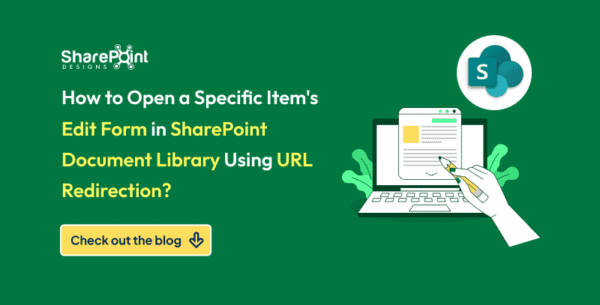In the realm of cloud computing, the Azure VMware Solution (AVS) stands as a pivotal innovation, offering a seamless bridge between on-premises VMware environments and the expansive capabilities of the Azure cloud. This deep dive into AVS reveals its essence as a Microsoft service, certified by VMware, that enables organizations to leverage their existing VMware investments while embracing the cloud’s dynamic resources and scalability.

Understanding AVS: A Microsoft and VMware Collaboration
At its core, AVS is a testament to the collaboration between Microsoft and VMware, designed to facilitate the migration and extension of on-premises VMware workloads to the Azure cloud. It caters to organizations seeking to exit the data center business, reduce licensing complexities post-Broadcom acquisition, or simply expand their data center footprint with more dynamic resourcing and disaster recovery options.
The Strategic Shift to Cloud with VMware Expertise
Organizations using AVS can maintain their VMware tooling and expertise, ensuring a comfortable transition to the cloud without the need to reskill personnel or overhaul existing processes. This strategic shift allows for the retention of familiar VMware functionalities while gaining the benefits of cloud-based resource management, reduced physical infrastructure concerns, and the flexibility and reliability that Azure offers.
AVS Deployment: A Closer Look at the Building Blocks
Deploying AVS involves a series of well-defined building blocks within the Azure ecosystem. It begins with selecting an Azure region, where AVS is available across numerous global locations, and continues with the creation of an Azure subscription and resource group. The solution resides within a specific availability zone, with the option for a stretch cluster spanning multiple zones for enhanced resiliency.
Scaling with AVS: Clusters and Nodes
AVS allows for the creation of up to 12 clusters, each comprising a minimum of three and a maximum of 16 nodes, with an overall cap of 96 nodes. This scalability ensures that organizations can tailor their AVS environment to their specific needs, whether it’s accommodating growth or optimizing resource allocation.
Seamless Management with Familiar VMware Tooling
One of the most compelling aspects of AVS is the ability to manage the environment using existing VMware tooling. This includes the vCenter Server for centralized management, NSX for software-defined networking, vSAN for storage solutions, and HCX for workload migration. These components are deployed within the AVS private cloud, providing a consistent and intuitive management experience.
Dynamic Resource Allocation: Adding and Removing Nodes
AVS offers dynamic resource allocation, enabling organizations to add or remove nodes as needed. This flexibility is crucial for adapting to changing demands and optimizing the utilization of resources within the AVS environment.
Networking in AVS
- Virtual Networks (VNets): AVS integrates seamlessly with Azure VNets, allowing organizations to connect their AVS private cloud to other Azure services. This connectivity enables cross-premises communication, hybrid scenarios, and access to Azure resources.
- NSX Integration: AVS leverages VMware NSX-T Data Center for software-defined networking. NSX provides micro-segmentation, load balancing, and advanced security features. It ensures isolation and efficient traffic routing within the AVS environment.
- IP Address Management: AVS supports both IPv4 and IPv6 addressing. Administrators can manage IP address pools and allocate them to workloads as needed.
Storage in AVS
- vSAN: AVS utilizes VMware vSAN for storage. vSAN is a hyper-converged infrastructure (HCI) solution that aggregates local storage devices across AVS nodes. It provides high availability, performance, and scalability.
- Storage Policies: Administrators can define storage policies to control data placement, redundancy, and performance. These policies ensure that workloads are placed on appropriate storage tiers based on their requirements.
- Azure Blob Storage Integration: AVS allows seamless integration with Azure Blob Storage. Organizations can use Blob Storage for backups, archives, and long-term data retention.
Identity and Security in AVS
- Entra ID ( formerly Azure AD): AVS integrates with Entra for identity management. Users can authenticate using their Entra credentials, ensuring a consistent and secure sign-in experience.
- Role-Based Access Control (RBAC): AVS follows Azure RBAC principles. Administrators can assign roles to users, granting specific permissions for managing AVS resources.
- Security Groups: AVS leverages Azure Security Groups for network security. These groups define inbound and outbound traffic rules, enhancing security within the AVS environment.
Real World Impact of AVS
Companies such as Hastings Direct have transitioned to Azure VMware Solution to cater to their clientele of four million. This migration has enhanced their application efficiency by 160%, enabling them to update customer quotes with four to five times the speed, thereby securing a competitive advantage. Hastings Direct has expressed that this shift to Azure VMware Solution was pivotal for their business transformation. They highlighted the underappreciated potential of utilizing such solutions to modernize legacy systems and seamlessly integrate them into the cloud. With this foundational change, they are now well-positioned to explore additional advancements through Azure’s cloud services, including those powered by AI. Read their full story here: Hastings Direct migrates Guidewire to Azure VMware Solution
The Wrap Up
Azure VMware Solution bridges the gap between traditional VMware environments and the cloud, empowering organizations to modernize their infrastructure while retaining VMware expertise. Whether it’s seamless networking, robust storage, or secure identity management, AVS offers a comprehensive solution for the hybrid cloud era.
This blog is part of Microsoft Azure Week! Find more similar blogs on our Microsoft Azure Landing page here.
About the author:

𝐓𝐫𝐲𝐢𝐧𝐠 𝐭𝐨 𝐬𝐭𝐚𝐲 𝐬𝐡𝐚𝐫𝐩 𝐨𝐧 𝐌𝐢𝐜𝐫𝐨𝐬𝐨𝐟𝐭’𝐬 𝐜𝐥𝐨𝐮𝐝 𝐭𝐞𝐜𝐡𝐧𝐨𝐥𝐨𝐠𝐢𝐞𝐬? 


Wallace, J. (2024) What is Azure VMware Solution?. Available at: (1) What is Azure VMware Solution? | LinkedIn [Accessed on 24/06/2024]









 Using a SharePoint Online list as a Knowledge source via ACTIONS in Copilot AI Studio
Using a SharePoint Online list as a Knowledge source via ACTIONS in Copilot AI Studio
